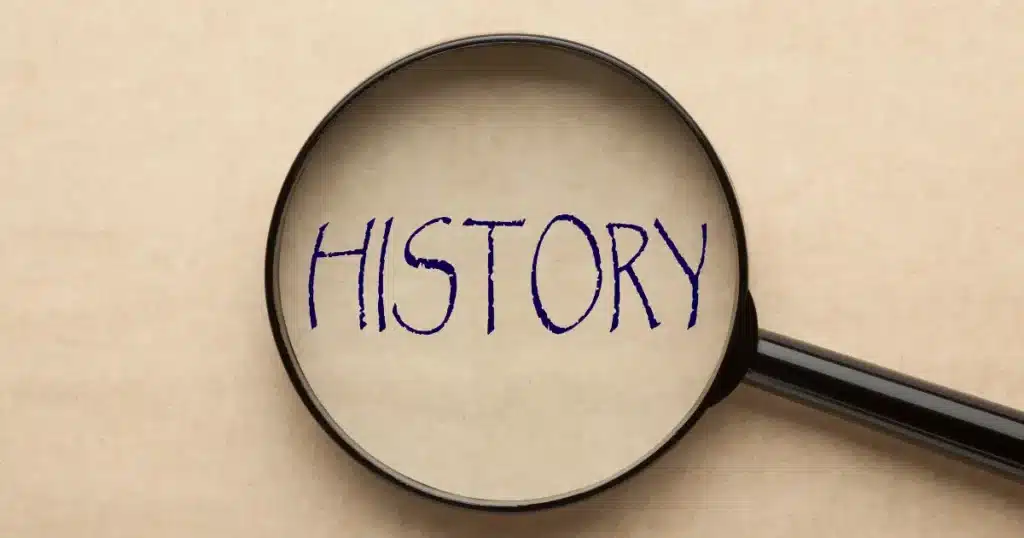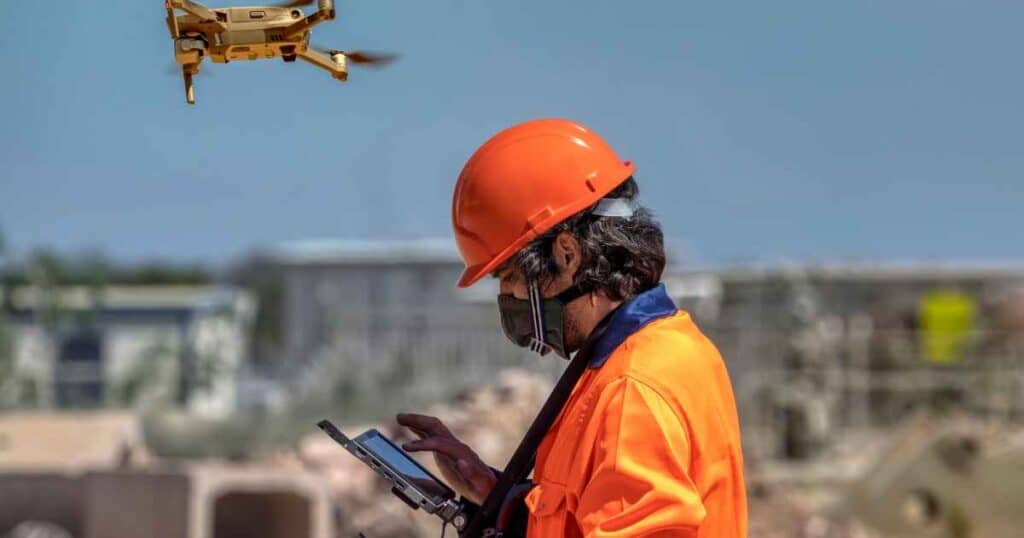From the depths of the ocean to the far reaches of space, LiDAR technology has come a long way since its inception. As one of the most transformative and versatile technologies, LiDAR has revolutionized the way we understand our world. In this article, we will delve into the captivating LiDAR history, tracing its roots, exploring its evolution, and unveiling its potential for shaping the future. Whether you’re a seasoned professional or just curious about the technology, join us as we embark on a journey through the annals of LiDAR.
The Early Beginnings of LiDAR
Origins in the 1960s: When was LiDAR first invented?
LiDAR, which stands for Light Detection and Ranging, was first invented in the early 1960s, shortly after the development of the laser in 1960. The initial concept of LiDAR was based on the principles of radar technology but used light waves instead of radio waves. Scientists and engineers quickly recognized the potential of this new technology for various applications, including remote sensing, topography, and meteorology.
First Uses in Meteorology and Topography: What is the brief history of LiDAR?
The early history of LiDAR is closely tied to meteorology and topography. In 1961, the US National Center for Atmospheric Research (NCAR) began experimenting with laser-based systems to measure cloud height and atmospheric properties. By the late 1960s, LiDAR was already being used to create accurate topographic maps and to study the Earth’s surface. The development of airborne LiDAR systems in the 1970s further expanded its applications in mapping and terrain analysis.
The History of LiDAR Remote Sensing
The use of LiDAR for remote sensing gained momentum in the 1980s and 1990s. The ability of LiDAR to penetrate vegetation and provide high-resolution data made it an ideal tool for studying forests, coastlines, and other natural environments. In the early 1990s, NASA began using airborne LiDAR for large-scale mapping projects, further demonstrating its potential for remote sensing applications.
Evolution of LiDAR Technology
Development of Airborne LiDAR
Airborne LiDAR systems, which were first developed in the 1970s, marked a significant advancement in LiDAR technology. Mounted on aircraft, these systems could cover vast areas and collect data at high speeds, enabling more efficient and accurate mapping efforts. As airborne LiDAR technology continued to advance, it became an indispensable tool for creating detailed digital elevation models and studying various aspects of the Earth’s surface.
Emergence of Terrestrial and Mobile LiDAR Systems
In the late 1990s and early 2000s, terrestrial and mobile LiDAR systems emerged, providing even more flexibility and versatility in data collection. Terrestrial LiDAR systems, mounted on tripods or other stationary platforms, enabled high-resolution scanning of structures and landscapes, while mobile LiDAR systems, mounted on vehicles, allowed for rapid data collection along transportation corridors and urban areas.
LiDAR in Archeology: When was LiDAR first used in archeology?
LiDAR’s application in archeology can be traced back to the late 1990s when it was first used to map ancient Maya sites in Central America. The ability of LiDAR to penetrate dense forest canopies and reveal hidden structures made it an invaluable tool for discovering and studying previously unknown archeological sites. Since then, LiDAR has played a crucial role in numerous archeological projects worldwide.
Commercial Availability of LiDAR: When was LiDAR commercially available?
LiDAR technology became commercially available in the 1990s, with several companies offering LiDAR systems for various applications. The growing interest in remote sensing and mapping, as well as the advancements in laser technology, contributed to the increased availability and affordability of LiDAR systems during this period.
The First Commercial LiDAR Scanner
The first commercial LiDAR scanner, the Cyrax 2500, was introduced by Cyra Technologies in 1998. This groundbreaking device revolutionized the field of terrestrial laser scanning and paved the way for the development of more advanced and versatile LiDAR systems in the following years. The Cyrax 2500 was designed for applications in surveying, engineering, and construction, offering users the ability to capture highly accurate, three-dimensional data of structures and environments. With its introduction, the commercial LiDAR market began to grow rapidly, leading to increased competition, innovation, and accessibility of LiDAR technology for various industries.
Key Milestones in LiDAR History
The Shuttle Radar Topography Mission
One of the most significant milestones in LiDAR history was the Shuttle Radar Topography Mission (SRTM) in 2000. Although SRTM utilized radar technology rather than LiDAR, it represented a major breakthrough in large-scale, high-resolution mapping. Conducted by NASA and the National Geospatial-Intelligence Agency (NGA), the mission aimed to create a near-global digital elevation model using data collected from the Space Shuttle Endeavour. The success of SRTM highlighted the potential of remote sensing technology, including LiDAR, for large-scale mapping projects and further solidified the importance of such data in understanding our planet.
The Geoscience Laser Altimeter System
Another important milestone in LiDAR history was the launch of the Geoscience Laser Altimeter System (GLAS) on NASA’s Ice, Cloud, and Land Elevation Satellite (ICESat) in 2003. GLAS was the first spaceborne LiDAR instrument designed to measure ice sheet elevation, cloud properties, and land topography. The data collected by GLAS contributed significantly to our understanding of Earth’s climate, ice sheet dynamics, and the global carbon cycle.
The Airborne LIDAR Bathymetry Technical Center of Expertise
The establishment of the Airborne LIDAR Bathymetry Technical Center of Expertise (ALB-TCE) in 2001 marked another significant development in the evolution of LiDAR technology. Operated by the US Army Corps of Engineers, the center focuses on the development and application of airborne LiDAR bathymetry for mapping coastal and nearshore environments. This specialized form of LiDAR has proven to be a valuable tool for understanding coastal processes, assessing flood risks, and supporting environmental management efforts.
With these milestones and the ongoing advancements in LiDAR technology, the applications and potential for future innovations continue to expand, paving the way for new discoveries and a deeper understanding of our world.
Modern Applications of LiDAR
Environmental Monitoring and Conservation
Today, LiDAR plays a crucial role in environmental monitoring and conservation efforts. By providing high-resolution data on forests, wetlands, and other ecosystems, LiDAR enables scientists to better understand the impacts of climate change, land use, and other factors on natural environments. This information is invaluable for conservation planning, habitat restoration, and the development of sustainable management strategies.
Archeology and Cultural Heritage Preservation
LiDAR has revolutionized archeology and cultural heritage preservation by enabling the discovery and documentation of previously unknown or inaccessible sites. The technology’s ability to penetrate dense vegetation and create detailed 3D models of structures and landscapes has led to groundbreaking discoveries in places like the ancient Maya cities of Central America and the lost city of Mahendraparvata in Cambodia. In addition, LiDAR is increasingly being used to monitor and preserve historical sites threatened by natural disasters, development, or other factors.
Autonomous Vehicles and Transportation
The rapid development of autonomous vehicle technology has been facilitated, in part, by advancements in LiDAR. High-resolution, real-time data from LiDAR sensors allow self-driving cars to navigate complex environments and avoid obstacles, making them safer and more reliable. LiDAR is also being used in the development of advanced driver assistance systems (ADAS) and various transportation infrastructure projects, such as road and rail mapping, and traffic management.
Infrastructure and Construction Planning
LiDAR technology has become an essential tool for infrastructure and construction planning. By providing detailed, accurate data on topography, vegetation, and existing structures, LiDAR enables engineers and planners to assess potential project sites, design efficient transportation routes, and optimize construction processes. This leads to cost savings, improved project outcomes, and minimized environmental impacts.
Future Possibilities for LiDAR Technology
Innovations in Solid-State LiDAR
One of the most promising areas of LiDAR development is the advancement of solid-state LiDAR technology. Unlike traditional mechanical LiDAR systems, solid-state LiDAR has no moving parts, making it more compact, durable, and affordable. These improvements have the potential to further expand LiDAR’s applications, particularly in industries such as automotive, robotics, and consumer electronics.
Integration with AI and Machine Learning
The integration of LiDAR with artificial intelligence (AI) and machine learning technologies is another promising area of development. By combining LiDAR data with AI algorithms, researchers and industry professionals can extract valuable insights and make more informed decisions. This could lead to the development of more efficient and sustainable urban planning, improved natural resource management, and enhanced safety features in autonomous vehicles.
Potential for Space Exploration
LiDAR technology also has significant potential for space exploration. With the successful deployment of LiDAR instruments on satellites, such as NASA’s ICESat and the European Space Agency’s Aeolus mission, spaceborne LiDAR is poised to make important contributions to our understanding of planetary geology, atmospheric dynamics, and climate change. In addition, LiDAR could play a crucial role in future missions to explore other planets and celestial bodies, such as Mars or the moon, providing detailed surface mapping and aiding in navigation and landing efforts.
In conclusion, the LiDAR history is a testament to the power of innovation and the relentless pursuit of progress. Over the years, LiDAR technology has evolved, expanding its applications and opening doors to new possibilities. From its early beginnings in meteorology and topography to modern applications in environmental monitoring, autonomous vehicles, and space exploration, LiDAR has proven to be an invaluable tool for both research and industry.
If you’re interested in learning more about LiDAR, we encourage you to explore our comprehensive guide, Aerial LiDAR 101: An Introduction to its Applications and Benefits. This resource will provide you with an in-depth understanding of the technology, its uses, and the advantages it offers across various sectors.
At Blue Falcon Aerial, we are committed to providing cutting-edge drone services, including LiDAR data acquisition and analysis. If you have a project in mind or need assistance with any drone services, please contact us and let our experienced team help you achieve your goals.




